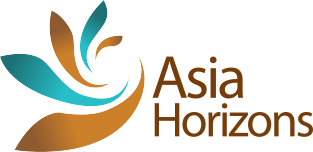ITINERARY
Cambodia & Laos Highlights – 14 Days / 13 Nights
- Angkor Int’l Airport/ hotel transfer: 20 mn
Arrive in the afternoon – visa processing, then meet with guide for transfer to hotel.
Relax after the long flight, then transfer to dinner in a local restaurant.
Overnight in Siem Reap.
- South Gate of Angkor Thom and Angkor Wat
Breakfast at your hotel.
Angkor Thom is a wonder of the world to discover its beauty. The temple is quite beautiful and majestic. It still keeps almost the structure of the work that is well preserved. Angkor Thom is also known as the Temple of Trees because there are many types of trees in this area. Along the way you can enjoy the local people's music program with the traditional instruments of this country, which is a remarkable activity
Proceed to morning visits with South Gate of Angkor Thom for including the famous Bayon Temple (featuring a sea of over 200 massive stone faces looking in all direction, built in the 12th century by King Jayavarman VII as part of a massive expansion of his capital Angkor Thom, built at the exact center of the royal city), Phimeanakas Temple within the Royal Palace enclosure, Baphuon Temple, the Terrace of the Elephants and the Terrace of the Leper King.
Lunch in a local restaurant.
The afternoon is dedicated to visit the most famous & magnificent Angkor Wat temple.
This architectural masterpiece was constructed in the 12th century and covers an area of about 210 hectares. With many galleries with columns, libraries, pavilions, courtyards and ponds full of water, carved low-reliefs about Ramayana Story and day-to-day life at the time of Angkor's construction.

At the end of the afternoon Angkor Wat discovery watches the sunset on the temples and the spectacular views over Angkor Wat from Phnom Bakheng Hill.
Overnight at hotel in Siem Reap.
- Banteay Srey and Grand Circuit
Breakfast at your hotel.
AM visit: Banteay Srei (Citadel of the women, completed in 967 AD and is built largely of red sandstone, a medium that lends itself to the elaborate decorative wall carvings which are still clearly visible today. Banteay Srei is the only major temple at Angkor not built for a king), then Banteay Samre (monument containing both Hindu and Buddhist depictions)
Lunch in a local restaurant.
PM visit: Grand Circuit including Pre Rup (Change the body), East Mebon, Ta Som, Neak Pean (built based on the balanced belief of ancient Hindus; four pools connect around the temple, representing elements of fire, water, land and wind - entering these pools will be healthy because it balances the elements), Preah Khan (built in the 12th century for King Jayavarman VII) and Baksei Chamkrong (a 10th century temple found near the Angkor Thom South gate with a very steep pyramidal temple topped with a single prasat tower built as a Hindu sanctuary dedicated to Shiva)
- Free time for shopping at Siem Reap day Market.
Overnight in Siem Reap.
- Boat trip on Tonle Sap Great Lake, Chong Khneas floating village • Flight duration to Luang Prabang # 2 hrs
Breakfast at hotel. Check out.
Transfer to Tonle Sap Lake wharf.
Enjoy a boat trip on the Tonle Sap lake. This is the largest permanent fresh-water lake in South East Asia and flows into Tonle Sap River, joining the Mekong in Phnom Penh.
Five provinces circled the area of Tonle Sap Lake, more than three million of population inhabited around the bank of the Lake and 90% of them earn a living by catching fish and making agricultures.
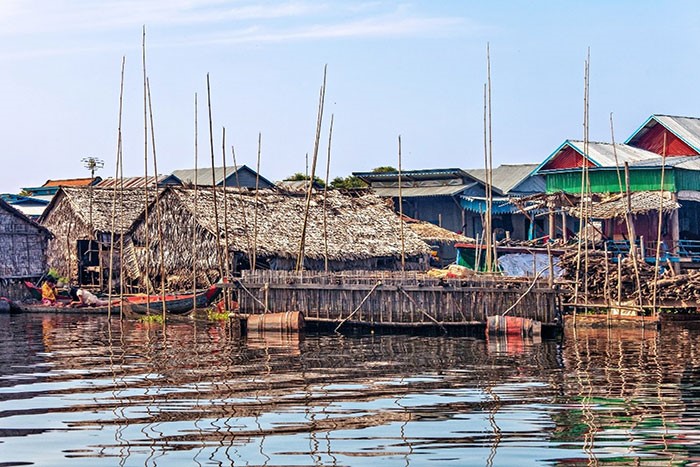
Join in a boat trip to Chong Khneas floating village at the edge of the lake for approximately two hours. You will explore the different of Khmer, Muslim and Vietnamese floating households and the floating markets, fisheries, clinics, schools, basketball course, pigsty and other boatloads of tourists. While sailing along Tonle Sap Lake, we make a stop at a local floating village to talk with the locals here to get more knowledge about to their routine life as well as witness how they make a living on Tonle Sap Lake.
Transfer to lunch before leaving for flight to Luang Prabang.
Arrival at Luang Prabang Int’l Airport – visa processing, then meet with guide for transfer to hotel.
Transfer to a local restaurant for dinner to enjoy a fresh and tasteful menu of Lao dishes, then to hotel for check in.
Overnight in Luang Prabang.
- Road transfer to Pak Ou Caves, boating on Mekong & Nam Ou rivers, handicrafts villages visits.
Breakfast at your hotel.
Luang Prabang was recognized by UNESCO as a world cultural heritage mostly because of the unique historical value of this royal city, where it witnessed the rule of 63 kings. Besides, the city is also a magnificent and mysterious Buddhist centre with thousands of temples, many of which are beautiful architectural accents, gilded with golden paint.
Not only that, Luang Prabang is also a peaceful, charming small city nestled on the green, poetic Mekong River and Nam Khan, surrounded by rolling mountains of clouds all year round.
In the past, this city was chosen to be the capital of the Lan Xang empire - the first kingdom of Laos (1350-1545). In the 16th century, although the capital was moved to Vientiane, Luang Prabang preserved its position as the cradle of Laos' diverse culture.
Luang Prabang is also a place to preserve the heritage of art and architecture: over 30 magnificent palaces, most built from the 14th century; about 40 ancient temples were built from different dynasties, each of which is a cultural work of high artistic value. Hundreds of antique wooden houses are designed in a very beautiful style, arranged in an orderly manner along the long and small streets, creating a lovely and still image.
The 1st visit is the former Royal Palace, now the National Museum where you will explore the history of Laos.

The Royal Palace Museum in Luang Prabang (also known as “Haw Kham” or "Golden Hall") was once Laos’ Royal Palace. It houses a lot of interesting historical items. Every item tells a story...so you will learn quite a lot about Lao history and about Laos’ royal.
Built in 1904, it features a blend of Lao traditional and French style. It was built for King Sisavang Vong and his family during the French colonial era.
After the death of King Sisavang Vong, the crown Prince Savang Vatthana and his family were the last to occupy the palace. After the revolution in 1975, the building was taken over by the government. The palace was then converted into a national museum and opened to the public in 1995.
Located in the city just the other side of the road from Phousi mountain, the palace is in walking distance of all main hotels and guest houses.
In the palace compound, there are several buildings to visit.
Transfer to the pier & embark for a boat trip for approximately 2 hours and 40 minutes to visit: Pak Ou Caves, Ban Khok Village & Ban Hatkam Village (surnamed Whisky Village)
The Pak Ou Caves are filled with thousands of Buddha statues, set in a rocky cliff face overlooking the Mekong River. They’re located around 25 kilometers from Luang Prabang in Northern Laos. There are two caves: a lower cave not too far from the river level, and an upper cave that’s a steep 5-10-minute climb up stone steps.
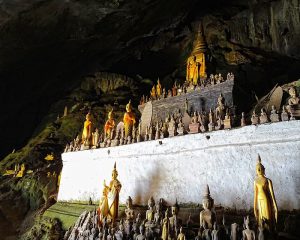
On the way, stop to visit the holly Pak Ou caves. The caves themselves are very close to the confluence of the Nam Ou and Mekong Rivers, hence the name Pak Ou. In these 2 caves are displayed hundreds of sacred centuries-old Buddha images which are the object of pilgrimages during the Lao New Year festivities around mid-April.
Continue the boat trip on Nam Ou River to visit Ban Sang Hay Village, a non-touristic village, where people live with simple way of life. Here you will see how local people produce traditionally liquor from sticky rice or Lao whiskey.
Boat back to the pier, then route transfer back to city for lunch.
On the way back, stop at the weaving village of Ban Xang Khong specialised for many years in manufacturing and selling products made from silk and Saa Paper (paper made from the bark of the Saa Tree).
Visit Wat Xiengthong - an ancient royal temple built in 1560 and Wat May with 5-layer thick roofed tiles. They are two of the many beautiful tombs with excellent architectural features and decorative details. Wat Xiengthong has rich wood carvings and decorations.
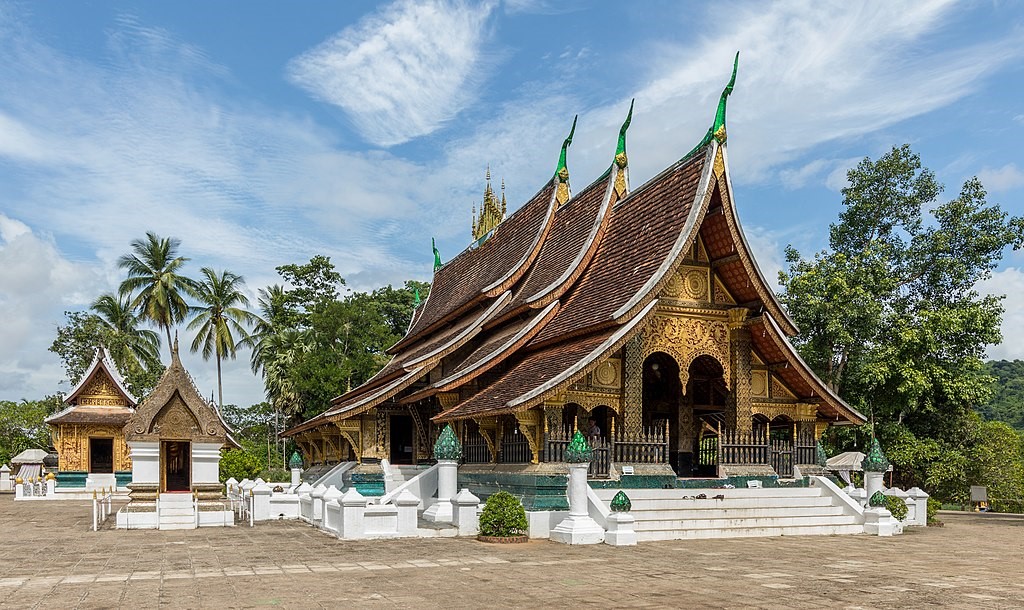
At the end of afternoon, ascent to Mount Phou Si for sunset to enjoy the terrific 360° panorama of Luang Prabang. The top of Mount Phousi is the perfect spot for a sunset and vantage point of Luang Prabang Town, Phan Phao temple, Mekong River and Nam Son River from here. One of the city's roofs that visitors can see from above Phousi is the royal tombs of the past - the impressive double cross in the combination of sophisticated architectural details of Laos and France. Now these tombs have become museums with many precious artifacts.
Back to the city for dinner.
After dinner, you can visit the hill tribe evening market for some shopping. This colorful market takes place every evening from around 5pm along the main streets of town and is a great place to look for souvenirs.
Overnight in Luang Prabang.
- Early morning offerings, then road transfer to Xiengkhuang 265km, 6hr
At sunrise, your guide will join you at your hotel to accompany you and to explain the daily singular ritual of the Morning Alms (Sai Bat) to the monks.
Sai Bat (Morning Alms) is a longstanding tradition in Laos Buddhist culture. In observing it, the devoted offer food to monks throughout the Luang Prabang every morning. This is sustenance for the monks, so great care is taken in preparation (and visitors wishing to take part should follow guidelines to ensure that they make appropriate offerings).
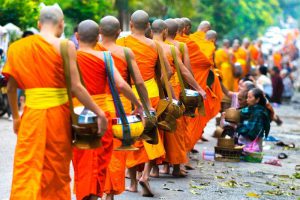
Each morning, starting at around 05:30, saffron-robed monks and novices emerge onto the streets with their alms bowls (‘bat’). Awaiting them are Lao people who have already taken the time to prepare sticky rice and other foods; they will place a portion in the bowl of each monk who passes by. The ceremony is undertaken in complete silence.
The cultural significance and austere beauty of Sai Bat has made it a very popular tourist attraction in Luang Prabang. Most visitors witness the ceremony in the old city centre, along Sakkaline Road in particular.
Then you will pace the morning market where all the ethnic groups around are gathering back the products of hunting, fishing and gathering.
Return to your hotel for breakfast and check out.
Then drive to Xiengkhuang, an area once devastated by American bombings between 1964 and 1973.
On the way, many stops will be done to take photographs and visit some minorities villages along the road. Lunch en route.
The province of Xieng Khouang has always been synonymous with fine Laotian silk, the tradition of which dates back for centuries.
Mulberries Organic Silk Farm, in the Phonsavan District of Xieng Khouang Province, is an establishment that aims to promote silk production as a way to generate income to families in surrounding areas while preserving the vanishing art of Laotian weaving. At Mulberries Organic Silk Farm, visitors can view all the silk making process right here in the house.
Arrival in the afternoon. Check in hotel.
Overnight in Phonsavan.
- Visits: Plain of Jars, road transfer to Vang Vieng 200kms, 4hrs
Breakfast at your hotel.
On the way to the Plain of Jars, stop at a local market for a short visit, then continue to the Plain of Jars.
The Plain of Jars, located on a plateau in central Laos, gets its name from more than 2,100 tubular-shaped megalithic stone jars used for funerary practices in the Iron Age. This serial property of 15 components contains large carved stone jars, stone discs, secondary burials, tombstones, quarries and funerary objects dating from 500 BCE to 500 CE. The jars and associated elements are the most prominent evidence of the Iron Age civilization that made and used them until it disappeared, around 500 CE.
More than 90 jar sites have been identified in Xiengkhuang Province. Each site has from one to 400 stone jars. The jars vary in height and diameter between 1 m and 3 m and are all hewn from rock. Their shape is cylindrical with the bottom always wider than the top.[2] The stone jars are undecorated, with the exception of a single jar at Site 1.
Time to visit Site 1 & Site 2.
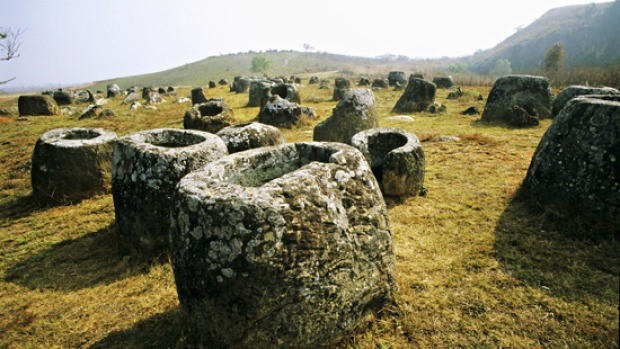
Lunch at a local restaurant, then continue to the old capital Muang Khoun, about 30 kilometres from Phonsavan.
Muang Khoun is the old capital of the Phuan Kingdom and was the provincial capital during French colonialism. This rural centre of faded glory was heavily bombed at the end of the 1960s and bears testimony to centuries of aggression. Once the town rivaled Luang Prabang in glory but today only few ruins remain, such as Wat Piawat. In the temple grounds sits a large robed buddha at the end of a column of brick pillars. The Buddha was allegedly shot when the building covering it was destroyed by enemy fire during the Indochina wars. Visit Ban Nasi village nearby by crossing a suspension bridge with a splendid view of lush fields and creeks. The villagers do basketry and weaving.
Leave Xiengkhuang on a scenic drive to Vang Vieng, a small and tranquil town, which is nestled on a bend of the Nam Song River. Its stunning scenery with a mixture of quiet water and limestone outcrops remains unspoiled, despite recent developments with the advent of tourism.
The most notable feature of the area is the karst topography surrounding the town.
Dinner at arrival.
Transfer to hotel for check in.
Overnight in Vang Vieng.
- Boat cruise on Nam Song river, Road transfer 160kms, 3hrs. Afternoon city tour of Vientiane.
Breakfast at your hotel, then enjoy a short bamboo raft or canoe along the Nam Song River, which gives you a taste of adventure. The limestone cliffs and valleys surrounding are home to numerous caves and caverns. The most famous in Vang Vieng is the cave of Tham Jang, which was used in the early 19th century in defence against the Chinese invaders.
Leave Vang Vieng for Vientiane.
Vientiane is the capital and largest city of Laos, on the banks of the Mekong River near the border with Thailand. Vientiane became the capital in 1573 due to fears of a Burmese invasion but was later looted then razed to the ground in 1827 by the Siamese. Vientiane was the administrative capital during French rule and, due to economic growth in recent times, is now the economic center of Laos. The city had a population of 820,000 as at the 2015 Census.
Vientiane is noted as the home of the most significant national monument in Laos: That Luang, which is a known symbol of Laos and an icon of Buddhism in Laos. Other significant Buddhist temples in Laos can be found there as well, such as Haw Phra Kaew, which formerly housed the Emerald Buddha.
Lunch at arrival, then visits:
- Pha That Luang is a gold-covered large Buddhist stupa in the centre of the city of Vientiane, Laos. Since its initial establishment, suggested to be in the 3rd century, the stupa has undergone several reconstructions as recently as the 1930s due to foreign invasions of the area. It is generally regarded as the most important national monument in Laos and a national symbol.
- Patuxai, literally meaning Victory Gate or Gate of Triumph (formerly the Anousavary or Anosavari Monument, known by the French as Monument Aux Morts) is a war monument in the centre of Vientiane, Laos, built between 1957 and 1968. The Patuxai was dedicated to those who fought in the struggle for independence from France. In romanising the name from the Laotian language, it is variously transliterated as Patuxai, Patuxay, Patousai and Patusai. It is also called Patuxai Arch or the Arc de Triomphe of Vientiane as it resembles the Arc de Triomphe in Paris. However, it is typically Laotian in design, decorated with mythological creatures such as the kinnari (half-female, half-bird).
Transfer to hotel for check in.
Overnight in Vientiane.
- Vientiane city tour
Continue the visits at Vientiane.
Haw Phra Kaew, also written as Ho Prakeo, Hor Pha Keo and other similar spellings, is a former temple in Vientiane, Laos. It is situated on Setthathirath Road, to the southeast of Wat Si Saket. It was first built in 1565 to house the Emerald Buddha, but has been rebuilt several times. The interior now houses a museum of religious art and a small shop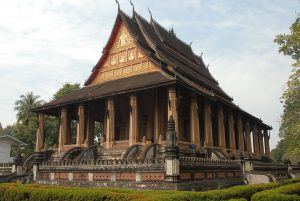
Haw Phra Kaew was built in 1565–1566 on the orders of of King Setthathirath after he moved the capital from Luang Prabang to Vientiane. The temple was built on the grounds of the royal palace to house the Emerald Buddha figurine.
- Wat Sisaket is a Buddhist temple in Vientiane. It is situated on Lan Xang Road, on the northwest of Haw Phra Kaev.
- Xieng Khuan Buddha Park
Sculpture garden housing over 200 Buddhist and Hindu sculptures
Buddha Park is a sculpture garden housing a collection of Buddhist and Hindu sculptures in a park like setting on the banks of the Mekong river outside Vientiane.
The park, also known as Xieng Khuan and Xiengkuane Buddha Park was built in 1958 by Luang Pu Bounleua Sulilat, a Laos national who later moved to Thailand where he created a similar park named Sala Keoku in Nong Khai, on the other side of the Mekong river.
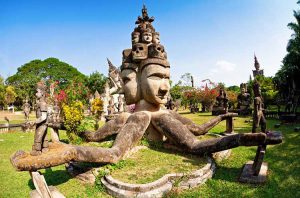
Although often referred to as Wat Xiengkuane, Buddha Park is not a temple, even though some of its sculptures like a large reclining Buddha are worshipped by local Buddhists.
Sculptures of the Buddha, Hindu Gods, demons & mythological creatures
The park houses over 200 sculptures made from concrete in varying sizes from small to very large. The sculptures of the Buddha, several Hindu Gods, demons and mythological creatures like a three headed elephant are pretty weathered, giving them an impression of being old.
One of the most striking sculptures is a giant pumpkin with three floors. At the front is a large mythological creature, its open mouth serving as the entrance. Its three floors represent Hell, Earth and Heaven. A staircase inside the pumpkin leads to the platform on top, from where good views of the park can be had.
Talat Sao is both a shopping mall (with air-conditioning) and morning market in central Vientiane. Its outdoor section has narrow walkways lined with market-style souvenir stalls, while the mall spans 5 floors, housing shops, banks, and currency exchange services.The shopping mall is where you can shop for clothes, sports equipment, and jewellery. There’s also a cinema and arcade centre, both popular among those looking to escape the heat and humidity.
Head to the 4th floor to find a large food court, where you can enjoy a wide range of local and international dishes.
Dinner at 4th Floor Talat Sao.
Overnight in Vientiane
- Flight to Pakse, duration 1hr35mn
Early breakfast at hotel, then transfer to Wattay Domestic Airport of Vientiane for flight to Pakse.
Arrival at Pakse Airport – luggage pick - up, then meet with guide for transfer to hotel to drop luggage.
Proceed to Pakse city tour.
Pakse is the capital and most populous city of the southern Laotian province of Champasak, making it the second most populous city in Laos. At the confluence of the Xe Don and Mekong Rivers, it has a population of about 88,000. It served as the capital of the Kingdom of Champasak until it was unified with the rest of Laos in 1946. The town is on the Mekong River.
Champasak is a province in southwestern Laos, near the borders with Thailand and Cambodia. It is one of the three principalities that succeeded the Lao kingdom of Lan Xang.
Champasak is bordered by Salavan Province to the north, Sekong Province to the northeast, Attapeu Province to the east, Cambodia to the south, and Thailand to the west. The Mekong River forms part of the border with neighboring Thailand and contains Si Phan Don ('Four Thousand Islands') in the south of the province, on the border with Cambodia.
Champasak has played a central role in the history of Siam and Laos, with frequent battles taking place in and around Champasak. Its cultural heritage includes ancient temple ruins and French colonial architecture. Champasak has some 20 wats (temples), such as Wat Phou, Wat Luang, and Wat Tham Fai. Freshwater dolphins and the province's many waterfalls are tourist attractions.
Walking tour on the passage next to Champasak Palace.
- Champasak Palace, in Pakse, Laos, was intended to be a residence of the Prince of Champasak, Chao Boun Oum.
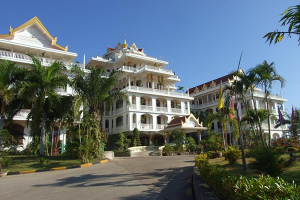 However, he had to abandon it in 1974 before it was finished, as the Royal Lao government was overthrown by the communist Pathet Lao. After the revolution, the building was completed and served as a venue for the communist party congresses and accommodation for visiting dignitaries. The palace was converted into a hotel in 1995 after a Thai company succeeded in its negotiations with the Laotian government.
However, he had to abandon it in 1974 before it was finished, as the Royal Lao government was overthrown by the communist Pathet Lao. After the revolution, the building was completed and served as a venue for the communist party congresses and accommodation for visiting dignitaries. The palace was converted into a hotel in 1995 after a Thai company succeeded in its negotiations with the Laotian government.
To discover the palace, you will have to book a reservation in order to have a chance to discover the architecture inside.
- Champasak Provincial Museum.
It holds the unique history of the province, which gathers all kind of artifacts and documents to chronicle the history of Champasak. The museum also holds historical photos of cultural events, foreign meetings and pictures of Kaysone Phomvihane, Nouhak Phoumsavan and Khamtay Siphandone, all from the south. There are displays of musical instruments, stelae in the Tham script dating from the 15th to 18th centuries, a water jar from the 11th or 12th century and pottery from around the province and plus a model of Wat Phu. On the higher level, it displays different ethnic clothing, along with textile and jewellery collections.
Lunch in a local restaurant.
Afternoon visits:
- Wat Luang is the main temple within the center of Pakse. It lies on the banks of the Se Don river just near the main bridge over the river and to the airport.
 The temple was established in 1935 and also serves as a Buddhist college as well. The old building that houses the college is one of the more interesting in the temple compound. The carved plaster decorations are quite fanciful.
The temple was established in 1935 and also serves as a Buddhist college as well. The old building that houses the college is one of the more interesting in the temple compound. The carved plaster decorations are quite fanciful.
Wat Luang temple has a functioning school for monks; studies include courses in English, Business Management, and Cultural Studies. There is a library on the premises as well as magnificent river views.
- Wat Phou Salao is a charming temple in a Pakse that is located on a pretty hill that looks out over the Mekong River.
The temple has the claim to fame of having a large statue of the Buddha inside and, as you would expect, the best time to come here is around sunset when you can enjoy majestic vistas across the countryside.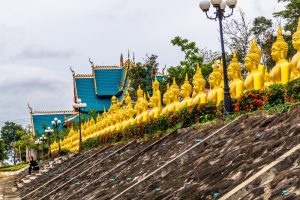
One thing to note is that you will need to climb up a long and steep staircase to get to the temple so make sure you plan accordingly and wear appropriate footwear.
Back to hotel.
Overnight in Pakse.
- Road transfer to Bolaven Plateau: 38kms, 1 hour • Visits: waterfalls, coffee & tea plantation.
Breakfast at hotel.
Leave Pakse for Bolaven Plateau. The 38-kilometer journey from Pakse to the falls takes visitors along a bumpy road through lush forests and across an old bamboo bridge.
The Bolaven Plateau is located within Champasak Province of Laos. The plateau's elevation ranges approximately from 1,000 to 1,350 metres above sea level. The plateau is crossed by several rivers and has many scenic waterfalls. The name Bolaven makes reference to the Laven ethnic group which has historically dominated the region. However, domestic migrations by the Lao ethnic group (which comprises approximately 50 to 60 percent of the population of Laos) has resulted in widespread interethnic marriage, thus modifying the ethnic composition of the region.
The most popular places visited by tourists are the waterfalls in the region, the villages of the ethnic minorities, and other geopolitical areas of interest.
Stop to visit:
- Tad Lo waterfalls
Tad Lo is really a series of three falls: Tad Suong, Tad Lo and Tad Hang..
- Tad Yuang falls is yet another waterfall found on the Bolaven Plateau.
 It is 10 kilometers west of Paksong and two kilometers east of Tad Fan falls. The falls are smaller than Tad Fan, and tumble into a pool 40 meters below. Unlike Tad Fan, however, it is possible to swim in the pools above and below the falls, although caution should be taken as there might be strong currents.
It is 10 kilometers west of Paksong and two kilometers east of Tad Fan falls. The falls are smaller than Tad Fan, and tumble into a pool 40 meters below. Unlike Tad Fan, however, it is possible to swim in the pools above and below the falls, although caution should be taken as there might be strong currents.
There is a pathway with a number of lookouts, at the top, middle, and bottom of the gorge. The top of the falls hosts a picnic area and there is a small coffee plantation nearby that can be visited. The entrance to Tad Yuang is becoming quite developed and there are some restaurants and shops.
- Tad Fane waterfalls (twin waterfalls) are located on the western side of the plateau and are are in an area surrounded by a rainforest and tea and coffee plantations – rumored to produce the best coffee in the country.
These twin waterfalls with their nearly 120m drops are striking to see throughout the year but even more so in the rainy season between July and October. October to February is harvesting season on the coffee plantations, offering visitors a unique insight into coffee farming and an opportunity to taste the best coffee in the country.
- Coffee & tea plantation
Transfer to hotel for check in & dinner.
Overnight in Bolaven Plateau.
- Visits en route: Wat Phu ruins, Khong Phapheng falls
Breakfast at hotel.
Leave Bolaven Plateau for Si Phan Done (or 4000 islands), a riverine archipelago on the Mekong River
On the way stop to visit:
- Wat Phou ruin temple:
Wat Phu (temple-mountain) is a ruined Khmer Hindu temple complex in southern Laos. It is at the base of mount Phou Khao, some 6 kilometres from the Mekong in Champasak Province. There was a temple on the site as early as the 5th century, but the surviving structures date from the 11th to 13th centuries. It has a unique structure: The elements lead to a shrine where a lingam dedicated to Lord Shiva was bathed in water from a mountain spring. The site later became a centre of Theravada Buddhist worship, which it remains today.
Recognized by UNESCO as the World Heritage. Wat Phou is a grandiose pre-angkorian temple built upon three levels.

Continue to Khone Phapheng falls.
The Khone Falls and Pha Pheng Falls together form a waterfall located in Champasak Province on the Mekong River in southern Laos, near the border with Cambodia.
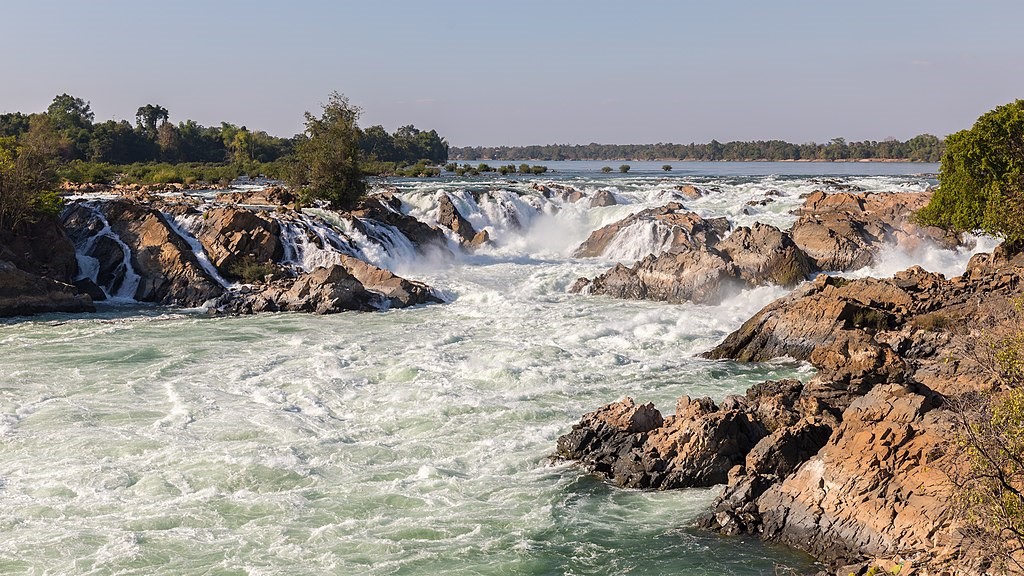
The Khone Falls are the largest in southeast Asia, and are the main reason that the Mekong is not fully navigable. The falls are characterised by thousands of islands and countless waterways, giving the area its name Si Phan Don or 'the 4,000 islands'.
Arrival at Don Khon, the biggest island of Si Phan Done.
Check in hotel.
Enjoy the stunning views of water whilst relaxing at hotel.
Overnight in Don Khon.
- Visits: Don Det, Don Khone • Boat trip along Mekong river • Ban Khong fishing village • Li Phi waterfall
Breakfast at hotel.
Explore the 2 islands Don Det and Don Khon, connected by a stone bridge.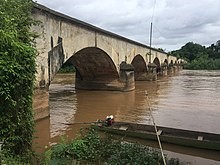
Boat trip along Mekong River to enjoy the beautiful landscape of the river and see the local people’s daily life as well as the peaceful time to see the children playing along the Mekong River.
Biking to visit these two islands.Visit Ban Khone fishing village.
The village of Ban Khone is located on Don Khon Island. This well - known fisherman’s village of Ban Khone is also famous for its cultivation of coconut, bamboo and cotton. Explore the local villages of Ban Khone, where you will see an array of relics from the French colonial era and retrace the old colonial past, including old French colonial buildings and the remnants of the first Lao railway with its locomotive.
At the western end of Ban Khone village is a cluster of raging rapids called Tat Somphamit (or Liphi Falls). Irrawaddy river dolphins may be spotted south of the village in the early morning or late afternoon from December to May.
Lunch, check out then transfer back to Pakse.
Overnight in Pakse.
Free time at leisure until flight departure /or/ other destination.
